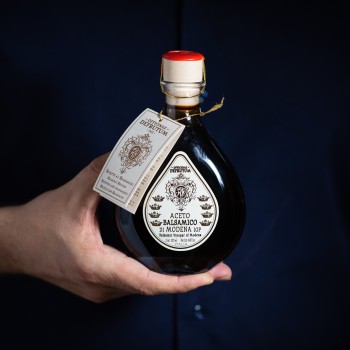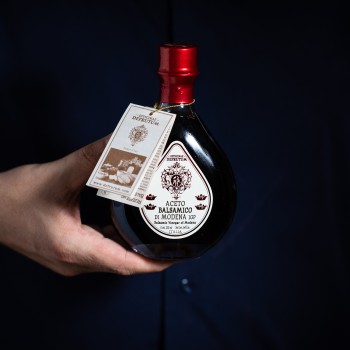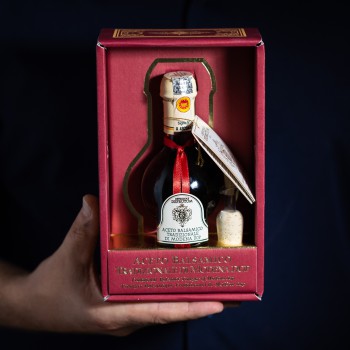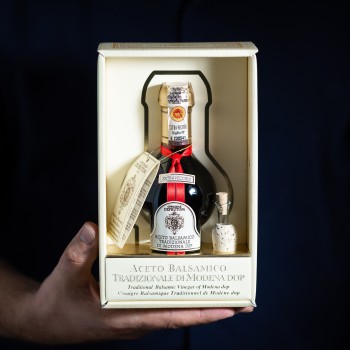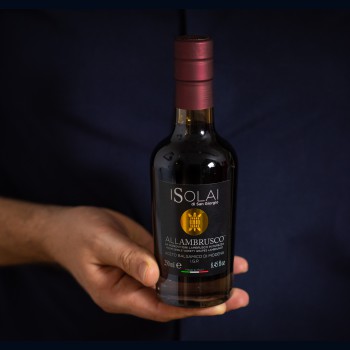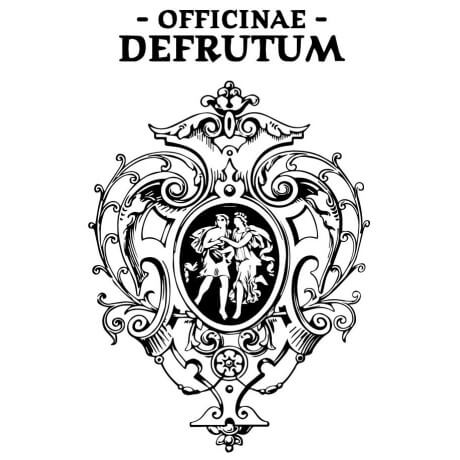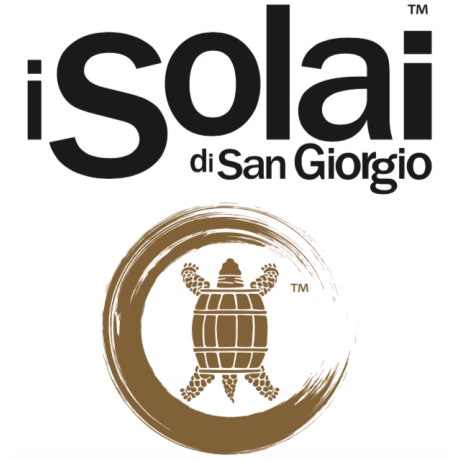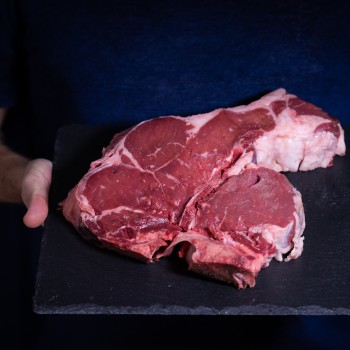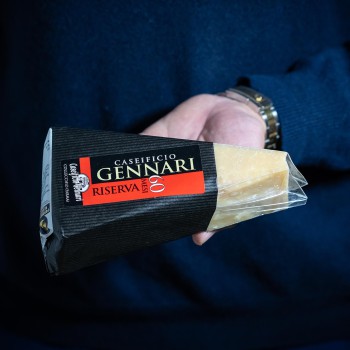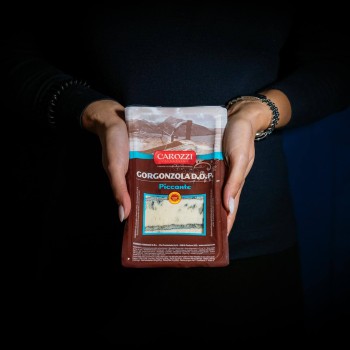- Meat & Seafood add remove
- Cured meats & Cheeses add remove
- Pasta & Pizza add remove
- Preserves & Condiments add remove
-

- Pickles & Preserves add remove
-
- Truffles, legumes & mushrooms add remove
- Desserts & snacks add remove
- Organic
- Tasting Selections
- Christmas
- Regali aziendali
- Brands
- Meat & Seafood add remove
- Cured meats & Cheeses add remove
- Pasta & Pizza add remove
- Preserves & Condiments add remove
-

- Pickles & Preserves add remove
-
- Truffles, legumes & mushrooms add remove
- Desserts & snacks add remove
- Organic
- Tasting Selections
- Christmas
- Regali aziendali
- Brands
Balsamic vinegar from Modena
The real balsamic vinegar
The Balsamic vinegar of Modena is one of the most beloved condiments in the world. This statement is backed up by numbers: balsamic vinegar is exported to more than a hundred countries. The black gold from Modena is a brownish, syrupy and aromatic liquid which does not contain any colouring agents or preservatives. It is aspecialty from Emilia-Romagna, which is deeply tied to its production territory.
Balsamic vinegar of Modena is an ambassador of Italian food around the world. It obtained the Protected Geographical Indication trademark in 2009 and is exported to 120 countries.
PGI balsamic vinegar of Modena - Margherita, aged 16 years, “8 corone” variety - 250ml


The brands we selected
Balsamic vinegar of Modena: PDO or PGI?
Let’s try to give a clear answer to this legitimate question. Let’s start by saying that both of these vinegars exist: there is the PGI balsamic vinegar of Modena and the PDO balsamic vinegar of Modena (since 2000). If neither of these exact names is written on the bottle, it means that it is not the original balsamic vinegar of Modena.
To obtain these two protection seals, production must strictly follow what the product specifications and the consortium state. Each production step must be carried out very carefully and only expert tasters can assess whether products are valid and authentic. One of the most important details of both PGI and PDO vinegars is that they do not contain preservatives, such as the infamous E150D, which is also contained in a very famous American soda.
Supermarket shelves are full of brown bottles, but only few of them are authentic. As we always say, the first thing to do is checking the label: it is the ID of a product and, even more so, of its producer. That’s what food selectors - like us - are for.
PDO Balsamic vinegar of Modena
Must
Traditional balsamic vinegar is a very refined product, an excellent world-renowned Italian specialty. It only has one ingredient: acetified cooked grape must. The must is produced between the months of September and October after the grape harvest, using local grape varieties: Lambrusco, Trebbiano, Sauvignon and Ancellotta.
Aging
Vinegar is aged in durmast, chestnut, cherry wood, ash, mulberry or juniper barrels placed in vinegar cellars called acetaie; these aging premises have a perfect humidity level which triggers the aging period. All the aromas of the wood used for the barrels, which are built by expert coopers, are soaked by the black gold of Modena, full of unique, refined and exceptional flavours. A perfect example is the balsamic vinegar by Officinae Defrutum.
PDO traditional balsamic vinegar of Modena refines for at least 12 years. During this time the liquid is gradually poured from a bigger barrel to a smaller one, and so on. As the vinegar is poured over and over, the amount of liquid decreases due to the natural processes of fermentation and evaporation. The vinegar becomes more reduced and aromatic.
Bottling
Once it has finished aging, in order to comply with the specifications, the traditional balsamic vinegar must have a deep dark colour, a syrupy texture, an intense scent and an extremely aromatic sweet-and-sour flavour.
Lastly, when expert tasters state that the traditional balsamic vinegar has reached perfect maturity, it can be bottled. Even the bottling process must follow specific rules: PDO specifications indicate that specific little bottles made of heavy transparent glass, round-shaped with a square base and with an embedded serial number, must be used.
PGI Balsamic vinegar of Modena
More than just must
Here lies the first difference with the PDO balsamic vinegar: PGI Balsamic vinegar of Modena is made of fermented or concentrated cooked must and wine vinegar, together with vinegar aged at least ten years, in precise amounts as stated in the specifications. Grapes always come from local vineyards.
Aging
Balsamic vinegar rests in wooden barrels for at least 60 days, while it reaches an acidity level of at least 6%. Through the expert tasters’ analysis, the end product can be certified as Balsamic vinegar of Modena and continue to age, if necessary. In order to be designated as “aged” balsamic vinegar of Modena, vinegar must age for at least three years.
Bottling
According to product specifications, all manufacturing steps, except packaging of finished products, must be carried out exclusively in the provinces of Modena and Reggio Emilia. The Balsamic vinegar of Modena can be sold in glass, wood, ceramic or terracotta bottles.
Food pairings
PGI Balsamic vinegar of Modena is able to complement any dish thanks to its incredible aromatic flavour. It should always be drizzled after cooking, off the heat; never cook it to avoid altering its aroma.
Balsamic vinegar and cheese
PGI Balsamic vinegar of Modena and Parmigiano Reggiano cheese originate from the same area and share a unique bond. They both have more or less intense flavours depending on how long they have aged and they pair best, when they “have the same age”. If, for instance, we combine a balsamic vinegar that has aged for 8 years with a 12-month aged Parmigiano, the result will be out of balance. The same thing will happen if we pair a balsamic vinegar that has aged for less than a year with a cheese that has aged over 36 months.
It pairs really well with cow’s-milk ricotta cheese: the flavour of ricotta cheese is not too intense and does not cover up the flavour of vinegar, thus enhancing it extremely well.
It also pairs very well with Gorgonzola cheese. Since they both taste amazing with radicchio, next time you make risotto with Gorgonzola and radicchio, add a couple of drops of balsamic vinegar of Modena - aged if possible. You won’t regret it.
Vegetables
Balsamic vinegar of Modena goes extremely well with onions, especially backed or caramelised. Their sweet flavour creates a simply exceptional contrast with the vinegar sourness. A recipe to impress: tarte tatin with caramelised onions and balsamic vinegar.
It also pairs really well with squash. This sweet vegetable perfectly complements the sweet flavour of balsamic vinegar, but it is damped by the sour note at the end. An outstanding side dish idea is baked squash with balsamic vinegar and finely chopped hazelnuts for an extra crunch.
Balsamic vinegar of Modena tastes amazing with tomatoes, too, but make sure to pair vinegar and tomatoes that have the same age. For instance, fresh tomatoes pair well with a young balsamic vinegar, while tomatoes packed in oil, dried tomatoes or semi-dried tomatoes taste amazing with an aged balsamic vinegar.
Meat and fish
A classic food pairing is balsamic vinegar with sliced steak: a refined meat cut combined with an exceptional product - what more could you wish for?
The flavour of chicken can also be enhanced by a couple of drops of PGI balsamic vinegar of Modena.
Pairing it with fish and seafood is very original, but somewhat more difficult to get right. Balsamic vinegar tastes exceptional with baked bar and gilthead bream, with seared tuna steak and stuffed calamari. However, it tastes the best with raw fish. It is a must on salmon tartare and raw shrimp scampi.
Dessert and fruit
PGI Balsamic vinegar of Modena perfectly complements sweet flavours: its sour note is able to create a very pleasant contrast, intensifying the flavour and cleansing the palate.
One of the most famous food pairing is balsamic vinegar with strawberries: a bowl of strawberries drizzled with balsamic vinegar, as a topping or sauce to garnish custards and semifreddo desserts - strawberries and balsamic vinegar are a winning duo, no matter how you combine them.
The same goes for the combination with pears. Pears, especially cooked pears, are sometimes too sweet; balsamic vinegar of Modena comes to rescue, finding a new balance and creating a new kind of sweet, full of intense nuances. We suggest trying panna cotta with caramelised pears and aged balsamic vinegar.
Balsamic vinegar is simply delicious with grapes. After all, vinegar is made of grapes and making a dessert out of two different stages of life of this fruit could be a nice idea. Make (or buy) some grape ice cream, put it in a crunchy wafer and pour some balsamic vinegar on it - the result is simply outstanding.






















